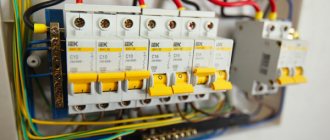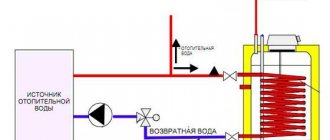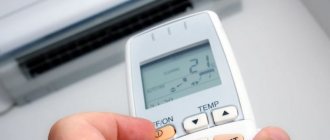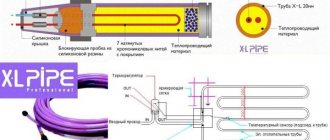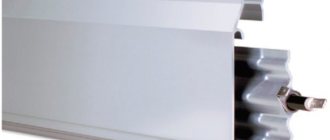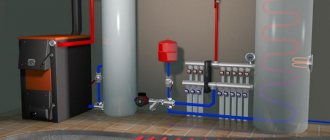Each consumer of electrical energy and other resources an individual meter must be installed. Today, various types of PU are used for this purpose. But it is on the basis of the IPU’s readings that the payment for services for the supplied electricity occurs. Wherein it is important to correctly take readings from the installed control unit, since the amount of payments and the absence of complications with the resource supplying organization depend on this.
In this material we will tell you how to take readings from an electricity meter depending on its type, what numbers need to be written off and reported to the service provider.
Types of electricity meters
Currently, metering device manufacturers offer not just a variety of device models, but also their different types . And consumers have the right to choose and install any of the IPU available to them. This is both an induction control unit, which is familiar to most consumers, and an electronic electricity meter. And, before considering how to correctly take readings from a certain type of electricity meter, you should talk a little more about the types of metering devices installed today.
Currently, various types of devices are used to account for received electricity.
IPU manufacturers offer two types of electrical energy metering devices:
- Induction type modifications with electromechanical design.
- Static type devices, which are based on electronic components and microprocessor circuits.
Despite the fact that induction devices are called “old” because they have been used for many decades, their relevance does not decrease over time - they are reliable, easy to use and provide high accuracy of readings . Today, IPU manufacturers use modern technologies and high-quality materials in their creation, and the modern design fits perfectly into the interior of a modern home.
The operating principle of both types of IPU is the same . The device is continuously in working condition, counting the power passing through it and displaying this information on a digital or display board, depending on the type. The values on the IPU are continuously changing upward.
By simple arithmetic operations, the user can, if necessary, calculate the amount of electricity consumed for a given period of time. This information is transmitted by consumers of services to the resource supplying organization. She, in turn, makes appropriate charges for the supplied electricity.
How to find out how many kilowatts the meter shows
How to measure power consumption and check the meter
How to measure power consumption and check the meter
Knowing the power is required in many cases. For example: To calculate the required cross-sections of the electrical wiring cable.
To determine energy consumption (power consumption). Let's take a closer look at power consumption.
The designation of power is the English letter P. The unit of measurement is Watt (W, W). 1000 W = Kilowatt
The unit of measurement for used electricity is kilowatt-hour. A kilowatt-hour is equal to the amount of energy consumed by a one-kilowatt device in one hour (power times time).
Nowadays there are a lot of household appliances. The table (published on the Internet, many of the data can be argued) shows approximate data on the power and number of household appliances for an average family. The approximate operating time in hours and monthly energy consumption are indicated.
approximate power data, number of household appliances, operating time in hours and monthly electricity consumption.
Of course, the data is averaged, you can create a similar table for your equipment. Calculate using new data. If the actual consumption and the approximate calculation differ significantly, there is a reason to check the meter.
How can you measure power at home? The most common method is using an electricity meter.
Using a modern electricity meter, you can find out not only electricity consumption. You can define several more types of information needed.
For an example photo of the scale of one modern meter:
counter scale
This meter shows readings in kilowatt hours according to tariffs: 1 - day, 2 - night, 3 (4) tariffs. There are 3 tariffs in Perm. In other cities, a different number of tariffs (weekends, holidays, etc.) There are meters that take into account a larger number of tariffs.
Shows power (P) in Watts.
E – kW*h readings, if the meter is used in an area where single-tariff metering is used. In multi-tariff accounting, this is the sum of the tariff readings. We currently see this indicator on the device display.
6400 imp/(kW*h) This is the transfer coefficient - the number of pulses (how many times the indicator lights up) in one Kilowatt*hour. Or the number of disk revolutions (indicator pulses) for which the meter will count one kilowatt hour. For this meter – 6400 pulses / kW * hour
Not all meters measure power. All must indicate:
how many revolutions will the disk make in one kW * hour (for electromechanical meters).
The number of pulses (how many times the indicator lights up) in one Kilowatt*hour (for electronic meters).
With this data and a stopwatch, the power can be determined.
Do you have a current clamp? Then you can compare the actual power and the power taken into account by the meter. This means that you can check the meter with an accuracy sufficient for home conditions.
We measure the current
Do you have any doubts about the accuracy of your electricity meter? Are you confident in your abilities and have the skills to work with equipment? Then we proceed to measurements, calculations and checking the meter.
Measurements must be carried out with the active load turned on. For example, incandescent lamps (not energy-saving or LED). You can also turn on the iron, household heater or kettle, but they can get hot and turn off at the most inopportune moment for us. Reactive load (equipment with electric motors and transformers - refrigerator, vacuum cleaner, stabilizer...) will introduce additional errors.
Taking readings from an induction meter
Let's start with how the readings of an induction type meter are taken . Such devices are installed by a huge number of consumers.
All devices of this type have a rotating wheel. Depending on the modification, the number of digital characters may be different (5 or 7) . Each number is located in its “own” window. Moreover, the number located on the far right in all accounting PUs differs from the rest. This could be highlighting it in color, for example, in red, separating it from the rest with a punctuation mark (usually a comma) or the size of its “own” window. This indicator indicates tenths of kW/h, which are not recorded when readings are taken.
Important! For some models of induction control units, the last digital value is not highlighted, and therefore, when taking readings, you should write down all the numbers.
In reality, anyone can take readings from the IPU - this is a simple procedure that needs to be performed periodically, usually every month . It is important for the consumer to correctly record the readings, since the correct calculation of payment for the supplied electricity depends on this. Many consumers record these readings in a separate notebook each month, but you can also refer to the entries in your pay stubs.
When taking readings from an induction device, only the whole value is taken into account
If necessary, replacement of the induction PU is carried out in the presence of an employee of the resource supply organization with the drawing up of a corresponding report.
And one more important point that must be taken into account when operating meters of this type . It is clear that the maximum number that can be shown on the display of this device is limited. When the value reaches 999999.9 (9999.9), the countdown starts from zero again, but then the consumer must remember that when recording the readings, the first digit of the value will be one + the rest of the data, i.e. the number of digits will increase by one.
Where to see
So, we found out that induction control units are equipped with a rotating wheel located under the main digital display . Thanks to the constant rotation of the wheel, the numbers on the display change, giving out the supplied electricity.
To record readings from the control panel, you need to write down the numbers from the display that are relevant for a specific date . To find out how much energy was consumed during the billing period of interest to the consumer, it is necessary to subtract from the recorded value the indicator recorded a month earlier. Next, the resulting difference must be multiplied by the tariff established for this type of service in a certain region. As a result, the consumer receives the amount of payment for the service.
How many digits to write down
Someone may ask what electricity meter readings need to be transmitted to the resource supply organization. As a rule, the indicator of the previous billing period and the current value are transmitted . Next, a simple arithmetic calculation of the total is performed.
In this case, the consumer must not write down all visible numbers - the highlighted number is not taken into account .
If you look closely at the PU, you can understand that the change in the highlighted digit occurs almost simultaneously with a full revolution of the disk. Due to the constant change in value, figures are taken into account that reflect the whole number of kilowatt/hours actually received
Electricity meter readings: how to get data from the device
First, you should learn how to take readings from an electric meter. So, the consumer of electricity must necessarily pay in full for the electricity consumed. To do this, he is obliged to transmit the instructions taken from the electric energy meter to the necessary authority, or to calculate the electricity consumption independently.
How to take readings from induction type electric meters:
All induction-type devices are equipped with a special rotating wheel, which is located under a frame with numbers. This information is needed in order to calculate and transmit readings.
- The number of digital values and the model of a particular device will determine which electrical energy meter readings should be transmitted.
- Basically, the induction meter display displays from five to seven digits. The most recent digit is separated from the total number by color, size difference, or comma. Sometimes, the last 2 numbers may be highlighted.
- At the time of reading information from the electricity meter, the numerical values that come after the decimal point are not taken into account. This information displays tenths and hundredths of a kilowatt. Based on this, they are not taken into account.
You should pay attention to the fact that there are modifications of devices where a comma or other type of highlighting is simply absent. In this situation, in order to perform the calculation, you must take the entire numerical value that is displayed in the scoreboard, otherwise there will be discrepancies in payment, which you will still have to pay.
How to take electricity meter readings correctly
After installing or replacing an electric meter in an apartment or private house, the owner receives a corresponding certificate that confirms the correct installation of the device. The initial digital values are recorded in this document.
To obtain information from the device, you need to transfer onto paper all the numbers that are currently displayed by this device, without taking into account the numbers after the decimal point. In addition, zeros that come before the first significant number are not taken into dawn. Those. one or more.
In order to make calculations, you will need information for the past month. In the very first month after installation of the equipment, these figures should be taken from the act. Then you will need to keep a special accounting journal or save all receipts to record the indicators.
Some subscription companies relieve the consumer of electrical energy from the need to perform calculations themselves. The consumer will only need to transmit information on time for a certain period of time. This procedure was made possible thanks to a specially developed automated system, which independently or with the help of an operator enters information into the personal account, calculates all charges and generates a check. In this case, the consumer only makes payment based on the issued invoice.
How to calculate payment based on electricity meter readings
If you decide to calculate the amount of payment for electricity, then use the following tips. You can calculate the amount to pay your eclectic energy bill yourself. To do this, you need to subtract the latest data from past readings. As a result, you should get the amount of electric energy that was consumed over the last period of time. You just need to multiply it by the current tariff.
For example, if your meter displays a numerical value of 5205 kW, and the previous figure was 4955 kW, then the calculation will be as follows: 5205 – 4955 = 251 kW (electricity consumption).
Note! In some cases, the counters begin to update automatically. It is for such cases that a certain calculation system is provided.
At the moment of resetting the counters, the readings should be rewritten taking into account all the indicated zeros, and the number 1 should be placed at the beginning. But still, the values indicated after the decimal point do not need to be taken into account.
For example, if your meter displays 00001.7 kW, you should rewrite this value as 100001.
From this indicator you need to subtract the previous values, and multiply the resulting result by the tariff. This calculation method is used once, after which readings must be taken according to the standard scheme - without leading zeros and additional ones.
Taking readings from an electronic meter
Readings from an electronic type electric meter , by and large, are taken on almost the same principle as from an induction control panel . Numerical data is displayed on the electronic display. These indicators are updated at the frequency established by the technical characteristics of the PU. Calculations are performed using a similar algorithm. However, there is one important nuance - this applies exclusively to PUs that have a single-tariff scheme for displaying indicators.
Taking readings from an electronic device depends on the type of device
Even more modern electronic control units provide for measuring electricity consumption depending on time . So the daytime rate will be slightly higher than the night rate. And multi-tariff meters record the exact amount of energy that was consumed by the consumer separately during the day and at night.
Here we will not delve into the benefits of installing such meters and their individual characteristics. The manufacturer provides instructions with each PU and, most likely, the consumer should not have any difficulties with the calculations. But we’ll tell you a little more about some models, or rather about how to take readings from them.
Mercury 200
IPU Mercury-200 is supplied in various designs - these are single- and multi-tariff models. Multi-tariff metering devices are distinguished by markings, for example, 200.01, 200.02 and 200.03. However, regardless of the type, readings are taken using the “Enter” button, or rather by pressing it. It is located on the front side of the device. Taking the necessary readings depends on how many times you press the button.
When a consumer makes a calculation according to one tariff (without dividing between day and night), the readings should be taken by pressing “Enter” 1 time. The T1 value is displayed on the electronic display. When accounting is carried out at different tariffs, the “Enter” button must be pressed twice :
- T1 – electricity consumed during the day. The displayed value is recorded.
- After pressing “Enter” a second time, the T2 value (amount of electricity used at night) is displayed.
Energy meter
IPU Energomera is a single or multi-tariff device . When taking readings from such a meter, the same algorithm should be used. The information is displayed on the electronic display of the device. The key difference is the name of the button used. For Energomer devices it is called “View” (PRCM). When recording readings, you should remember that only the numbers before the period (comma) are taken into account.
Energy output meters for both taking readings at one tariff and at a day-night tariff
The meters from this manufacturer provide indication in automatic and manual modes:
- in the first case, the values on the display are displayed in a set sequence and cyclically with a slight interval;
- to obtain readings in manual mode, you will need to use a special button (“Frame” or “PRCM”, depending on the modification).
Usually, having read the manufacturer’s detailed instructions for a specific model, consumers can easily cope with taking readings from these PUs.
Micron
Multi-tariff electronic PU Microns have a single button on the body . By clicking on it, the corresponding readings are displayed on the display.
But in this option, you will need to wait until the “tick” appears on the display above the designations “T1” and “R+” . This will be the first tariff reading. They need to be recorded for calculation.
Next, you need to press the same button again . Checkmarks will appear above T2 and R+. Write down the value. When there are zones T3 and T4, press again and wait for the corresponding values to be displayed.
Saiman
Today, many electricity suppliers are replacing outdated induction models with new electronic meters . They do this completely free of charge for the consumer of the service and by installing Saivan PU.
This is the simplest device; it has no buttons at all that are used to forcefully “scroll through” values . Here you just need to wait until the corresponding indicator is displayed on the board.
The data on the electronic display of such a device is displayed in a certain sequence:
- current number;
- time;
- No. PU;
- transmitted indicator;
- readings when using one tariff (Total), if the control panel is multi-tariff, T1, T2 and Total are displayed sequentially.
The Total (or T1 + T2 + Total) readings are entered into the payment slip. Here you also do not need to write down the number after the period (comma) - only the whole number is taken.
Taking readings from a Mercury type meter
How to replace an electricity meter?
Well-known models of Mercury electricity meters can have both single-tariff and multi-tariff versions. An indication of the number of reading modes can be seen from the model designation, at the end of which there are icons 01, 02 or 03.
Regardless of the sample chosen, readings from all these meters are taken in the same way, namely:
- Before determining the amount of electricity consumed, you must press the “Enter” button;
- First, numbers will appear on the display indicating the current time and date the readings were taken;
- To obtain data on tariffs, the same button must be pressed as many times as the number of tariffs provided in this model (see photo);
Electric meter Mercury
Note! The resulting data should be written down as carefully as possible, which eliminates the possibility of errors in the information bits.
- When pressed, a sequential display of tariffs begins, indicated by icons in the upper left corner (t1, t2, t3 or t4), and the corresponding consumption in kilowatts;
- Each of these readings should be carefully read in the same order as the mode designations that appear (day-night, peak or normal time, etc.);
- When reading them, only the whole part should be written down (without the decimal places).
Upon completion of the cycle of displaying information about energy consumption, the three-tariff meter begins to show the checksum of all three modes (including periods of peak loads, as well as day-night intervals).
After this, the readings from the three-tariff meter are repeated with a certain frequency (approximately 5-10 seconds). This indicator in most cases depends on the settings of a particular device.
During the specified time, the user, as a rule, manages to read the readings from the indicator of the electronic device. If you accidentally skip the next sequence of accounting data, you can switch the meter to manual mode for selecting readings (using the “Enter” button).
Certain difficulties arise when taking readings when it is necessary to calculate the number of kilowatt-hours consumed for each of the regulated zones. But with time, experience usually comes, after which it is possible to evaluate information on energy consumption without any problems.
Features of three-phase meters
Separately, we need to tell you how to take readings from a three-phase electricity meter. PUs of this type are found today in two versions :
- old model, where the presence of transformers is mandatory;
- modern electronic modifications with direct connection.
When taking readings from a three-phase meter, you need to know exactly the transformation ratio
When operating an electronic device, the owner will be able to obtain the required readings using the algorithm described above . You will need to write down the values, wait until the required data is displayed on the display, or “scroll through” the values to the appropriate page.
When allocating large powers or operating an “old” device, a transformer is installed for all phases. To record correct readings from such a device, you need to know exactly the individual transformation ratio . The data recorded from the device will need to be multiplied by the indicated coefficient. The result of the multiplication is the actual amount of electricity received.
But it’s better to carefully read the agreement with the resource supply organization . It describes in detail the calculation procedure - some suppliers ask you to record the readings and put the transformer information and (or) coefficient under them. And direct payment is made by the supplier himself. Therefore, when operating a three-phase IPU, check the calculation rules when connecting and sealing the meter.
Three-phase metering devices: nuances of reading readings
Three-phase devices, if they are used for high powers, are called transformer devices. These are different from the direct-connection electricity meters we are used to. As such, the phase conductors of electrical wires do not come to them. Instead, current transformers are installed on the phase buses, and wires from them go to the meter. How to take readings from such a counter? To do this, we take the data from the device and multiply it by the transformation coefficient. These will be the numbers we need.
If a three-phase electronic device is installed, then the question of how to take readings from the electricity meter (day, night) will no longer arise. Everything is done by analogy with the metering devices described above.
Three-phase electricity meters are quite bulky
Devices with automatic transmission of readings
Such a problem as viewing, recording and transmitting data from the IPU to the resource supplying organization practically does not affect those consumers who install state-of-the-art devices.
These devices independently send all the necessary information to the electrical energy supplier . For this purpose, a special channel is configured, data through which is transmitted automatically. Installation and configuration of such a device is a rather complex procedure that must be performed by qualified employees of the resource supply organization. However, after installing such a device, the consumer does not need to worry about sending data.
How to make calculations for payment
We described in detail how to look at various types of metering devices. Now we’ll tell you how to read (enter) readings to obtain the final payment amount for the electricity received.
Here the service consumer needs to perform several simple arithmetic operations. The basic formula used for calculations in PU of all types looks like this :
Amount to be paid = (P1 - P2) * T, where
P1 - readings of the current billing period;
P2 – readings of the previous billing period;
T – tariff established for electricity in a specific region.
This formula applies to both induction devices and electronic devices configured to provide data at the same rate.
When a two-tariff PU is in operation, such calculations must be carried out for the day and night tariffs, and then the resulting numbers must be added up. This will be the final amount due.
Sealing of meters
IPU sealing is proof of the mechanical integrity and correct operation of the device . This procedure protects against unauthorized withdrawal of electricity from the resource supply organization. Sealing the IPU is a mandatory procedure; each working electric meter must have a seal from the resource supplying organization.
Meters are sealed at the manufacturer and when the device is put into operation by an employee of the supplying company.
There are currently two types of fillings in use::
- from the device manufacturer;
- from your electricity supplier.
The PU sealing from the manufacturer confirms that the device has passed the necessary certification and operates in accordance with established standards. The declared characteristics meet the requirements, and the device itself has the proper measurement accuracy. In addition to this, the factory seal, the PU passport, which must be attached to each product, is proof that the device has passed all tests.
The second seal is placed during installation and commissioning of the IPU . This indicates that the resource supplying organization has accepted a specific PU on its balance sheet. Sealing is carried out exclusively by representatives of the organization that supplies electricity to a specific consumer and controls its timely payment.
Anti-magnetic seals
Unfortunately, not all electricity consumers pay for the service provided in good faith . In addition, many electricity consumers install magnets and a meter with such a magnet shows a value much less than the real one.
To prevent this from happening, service providers today supply their consumers' meters with a special anti-magnetic seal . In this case, it is not a seal as such, but a special sticker on the device body. It is a kind of indicator - if a magnet is used on a device with such a sticker, then the strip with a magnetic field changes color. Employees of the resource supplying organization, when conducting regular checks, having discovered such changes, have the right to fine the consumer.
Tests carried out with anti-magnetic indicators showed that the color changes when the magnet is no more than 5 cm away from the device. And this eliminates any accidental magnetization of the magnetic strip of the indicator.


